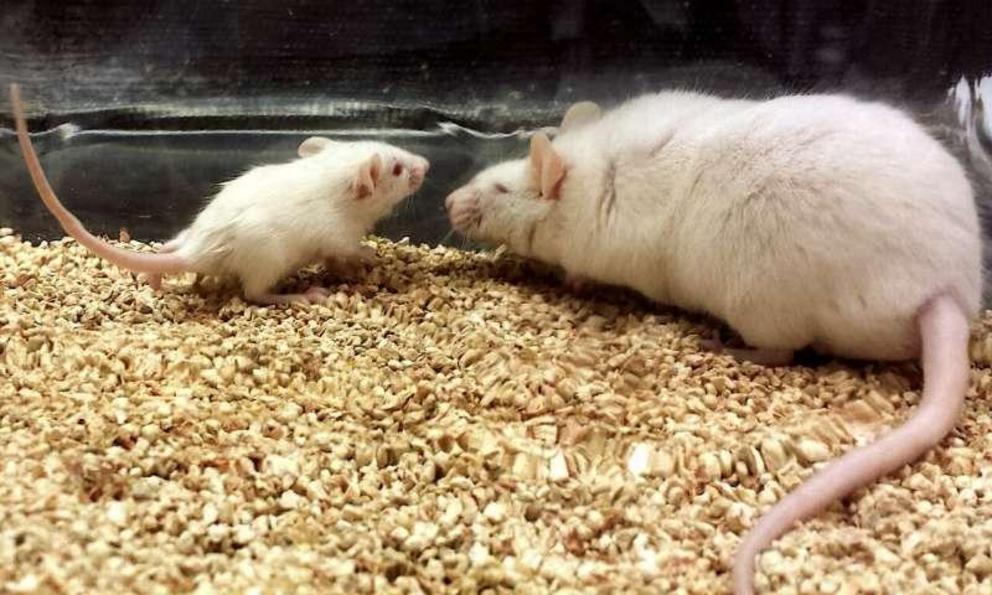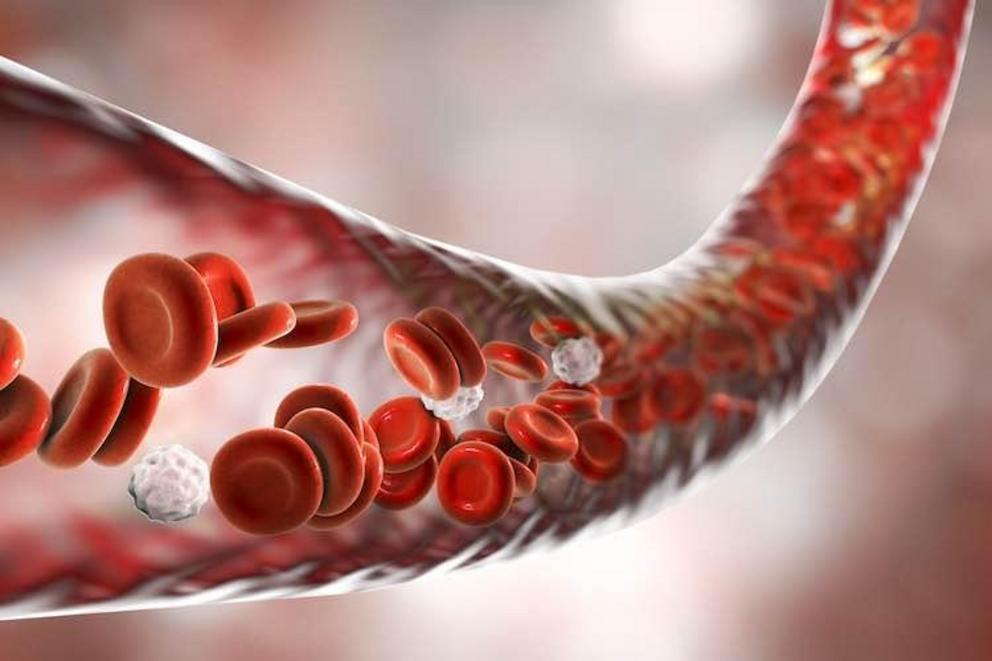Researchers find synapse-boosting factors in young blood

Young (15-day-old; left) and aged (15-month-old; right) mice used in the experiments.
A team of researchers at Stanford University has found synapse-boosting factors in the blood of young mice. In their paper published in Proceedings of the National Academy of Sciences, the group describes their study of the rejuvenating impact of blood from young mice when transfused into older mice, and what they learned about it.
Prior research has shown that transfusing blood from young (12 to 15 months old) mice into older mice can reverse some of the signs of aging in the brain and sometimes other parts of the body—a process called parabiosis. While researchers have studied the effect, it is still not clear which factors in young blood provide the rejuvenating effects. In this new effort, the researchers looked deeper into the phenomenon and found two possible answers.
To learn more about parabiosis in mice, the researchers transfused serum from mice between the ages of 12 and 15 months into older mice to study its impact. They also did the same with 15-day-old mice. In so doing, they found that the youngest mouse blood resulted in more pronounced neuronal dendrite branching, a bigger increase in the number of synapses, and a bigger increase in the release of neurotransmitters compared to blood from less young mice. They also found that it provided more improvements in N-methyl-D-aspartate receptor-mediated synaptic function in the older mice. They next found that applying the young blood to neurons cultured in the lab did the same. And finally, they found that doing so also boosted synaptic connectivity. Conversely, they found that applying serum from older mice to younger mouse neurons had the opposite effect.
To isolate the properties in the young serum that were behind the rejuvenating effect, the team looked at samples using tandem mass spectrometry—they isolated two proteins (thrombospondin-4 and SPARC-like protein-1) that appeared richer in the younger serum. When the two proteins were applied to the older serum, some of the same rejuvenating effects took place, suggesting that they were at least two of the factors responsible for the rejuvenating effect. The researchers suggest that the blood of young mice likely holds many kinds of synapse-promoting factors that decline as mice age.
More information: Kathlyn J. Gan et al. Specific factors in blood from young but not old mice directly promote synapse formation and NMDA-receptor recruitment, Proceedings of the National Academy of Sciences (2019). DOI: 10.1073/pnas.1902672116
Journal information: Proceedings of the National Academy of Sciences

